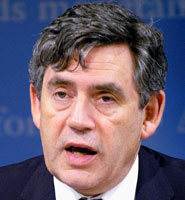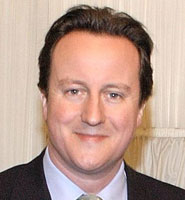In a paper published today in British Politics they demonstrate the value of using Early Day Motions to assess whether MPs fundamentally agree with others in their party or, when expressing their personal opinions, they agree with members of opposing parties.
The early day motion (EDM) is a device used in Parliament to publicise the views of individual Members of Parliament in the House of Commons. It allows MPs to express their opinion on a subject and to canvass support for it by inviting other members across all parties to add their signatures.
The topics addressed are hugely varied; anything from backbenchers seeking to accelerate or otherwise change Government policy, to those offering congratulations to a particular football club. But whatever the subject, the key point about EDMs is that they are ‘unwhipped’; MPs are entirely free to sign or not sign and as such, EDMs are an indication of an MP’s real beliefs.
Using a series of statistical techniques that analysed which MPs signed which EDMs (there are about 2,000 EDMs a year) Bailey and Nason tracked the fortunes of the three main parties immediately after the last General Election in May 2005 when Labour won for a third term, but with a greatly reduced majority. The Tories, expected to make large gains, fared little better, causing Michael Howard, then leader of the Conservatives, to announce that he would retire from front-line politics.
Professor Nason said: “The idea is that if things were going well for a party, MPs are cohesive – they all agree with each other and stick together – but if things are going badly for a party, they start disagreeing and have different opinions, so factions appear. Unsurprisingly, the period following the election is marked by all three parties showing a considerable level of fluctuation in their cohesiveness, as if in some disarray.”
Although Michael Howard resigned as Tory party leader after the election, he did not step down immediately. The leadership campaign lasted all of November and continued into December, with David Cameron finally emerging as leader on 6 December 2005.
This is reflected in the trend in cohesion of the Conservative party which slumped in November 2005 and then rose, continuing an overall upward trend right through to the end of January 2006. But then a further low can be seen during late March. The new leader was starting to show the direction in which the party was heading and a controversial education bill was narrowly passed, but only with Conservative support.
After the election, the number of Labour seats was down from 180 to only 66 and the Labour party generally exhibits lower cohesion than the other parties. Even after the summer break when the other parties settled down, there appears to be no significant improvement in the Labour party. Cohesion levels are at a level which suggests that MPs regularly disagreed with other members of their party.
As with the Conservatives at this time, the cohesion of the party further dropped in March 2006. The education bill which was passed during this time split the Labour party, with mass rebellion from the Labour backbenches.
During the session, the Liberal Democrats’ cohesion level dramatically rose and fell as the leadership came under a lot of pressure, despite gaining seats. Activists felt the party had not taken advantage of a weakening government and opposition and criticised the leader, Charles Kennedy, for his policies and election campaign. It was also known within the party that he was battling with alcoholism.
After a period of intense pressure by high profile party members, Charles Kennedy admitted having a problem and resigned as party leader on 9 January 2006. However, following the leadership election, Sir Menzies Cambell did not achieve the cohesion levels in the party seen during 2005.
Dan Bailey, who researched Early Day Motions for his PhD said: “The information gained from looking at Early Day Motions can really provide an insight into many aspects of political life: does your MP really agree with party principles, or are they secretly more in tune one of the other parties? What are the issues that are causing your party trouble and strife? What is the overall mood of the party at any one point in time – just before an important vote, for example?”
These are fascinating questions that other politicians, journalists and the general public might well be interested in having answers to.

